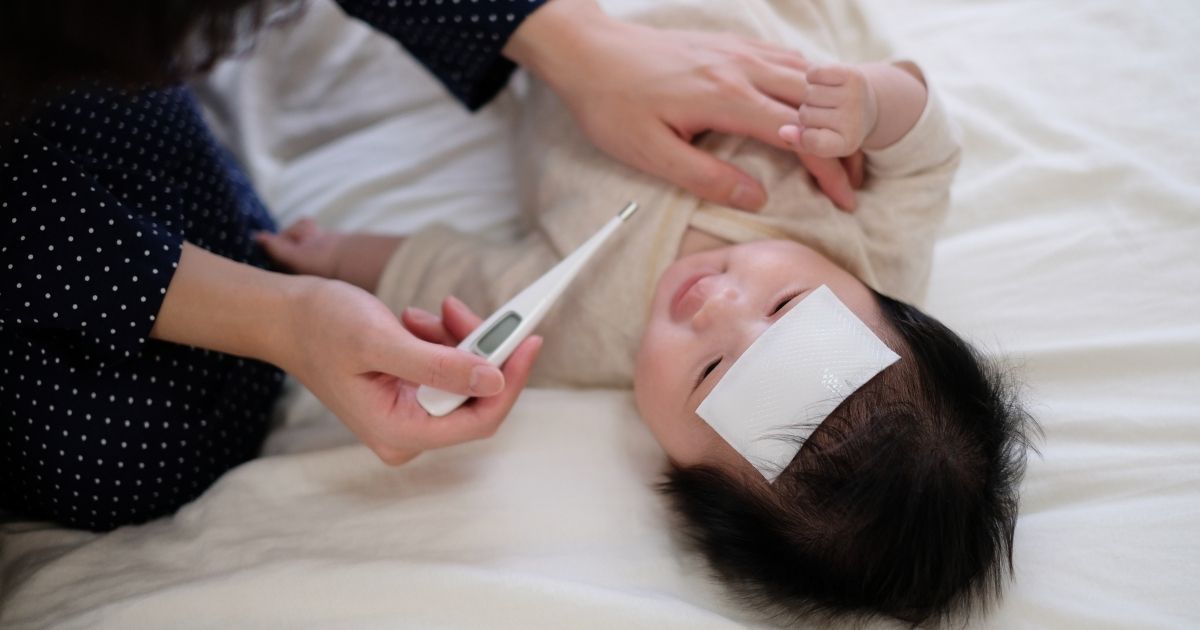When your child has a fever, it’s natural to feel worried. While fever often means their body is fighting off an infection, knowing how to manage it and when to seek care is crucial. DoctorTora lets you consult a doctor quickly and comfortably from home, ensuring your child gets timely and reassuring care.
Causes, Symptoms, and When to Seek Help
Introduction
Fever in children can be concerning for any parent. While it’s often a sign that the body is fighting off an infection, knowing how to manage and monitor a fever is essential. With telemedicine services like DoctorTora, you can consult a healthcare professional from the comfort of your home, ensuring your child gets the care they need without unnecessary stress.
This article will guide you through understanding fever in children, its causes, symptoms, treatments, and when to seek care through telemedicine or in person.
What is Fever?
Fever is a temporary rise in body temperature, usually above 37.5°C when measured orally or 38°C when measured rectally. It’s the body’s natural response to infections, as elevated temperatures help fight off viruses and bacteria.
In children, a fever is common and often not a cause for alarm. However, it’s crucial to monitor your child’s symptoms and ensure they stay comfortable and hydrated.
Common Symptoms and Causes of Fever in Children
Symptoms
Fever in children may present with:
- Warm or flushed skin.
- Sweating or chills.
- Fatigue or irritability.
- Loss of appetite.
- Increased thirst.
- Headache or muscle aches.
In some cases, fever may be accompanied by more specific symptoms depending on the underlying cause, such as a sore throat, cough, or rash.
Common Causes
Fevers in children are often caused by:
- Viral infections: Colds, flu, or chickenpox.
- Bacterial infections: Ear infections, strep throat, or urinary tract infections.
- Immunizations: A mild fever is a common side effect of some vaccines.
- Teething: Although not a direct cause, teething can sometimes coincide with mild fevers.
- Overheating: Prolonged exposure to heat or excessive clothing.
How is Fever in Children Diagnosed?
Diagnosing a fever involves taking your child’s temperature. Reliable methods include:
- Ear or forehead thermometers: Most commonly used method at home.
- Oral thermometers: Can only be used in children over 5 years old.
- Rectal thermometers: The most accurate method for infants and toddlers, but they are usually not necessary for at home use.
- Axillary thermometers: Taken under the armpit, they are easy and non-invasive but may provide less accurate readings compared to other methods.
A healthcare professional may ask about:
- Recent illnesses or exposures.
- Other symptoms like rash, difficulty breathing, or vomiting.
- Your child’s immunization history.
With DoctorTora, you can discuss your child’s symptoms with a doctor online and get guidance on next steps, including any additional tests that may be needed.
How is Fever in Children Treated?
Medications
For mild fevers, treatment may not be necessary if your child is otherwise active and comfortable. However, medications can help lower the temperature and relieve discomfort:
- Paracetamol: Suitable for children of all ages; always follow the recommended dosage.
- Ibuprofen: Another option for reducing fever, but not recommended for infants under 3 months or children who are dehydrated.
Non-Medication Strategies
- Hydration: Encourage your child to drink water, oral rehydration solutions, or clear fluids like broth.
- Cool compresses: A damp cloth on the forehead can help lower body temperature.
- Light clothing: Dress your child in breathable, lightweight fabrics.
Avoid giving aspirin to children, as it’s associated with a rare but serious condition called Reye’s syndrome.
Self-Care Instructions for Fever in Children
- Monitor the fever regularly: Check your child’s temperature every few hours.
- Ensure adequate rest: Allow your child to sleep and recover.
- Provide comfort: Keep their room cool and well-ventilated.
- Encourage fluids: Prevent dehydration by offering small sips of water or electrolyte drinks frequently.
- Avoid over-bundling: Layering clothes or blankets can trap heat and worsen a fever.
When to Seek Care with Telemedicine for Fever in Children
Telemedicine is a convenient way to address concerns about fever in children, especially for mild to moderate symptoms. With DoctorTora, you can:
- Download the DoctorTora app from the App Store or Google Play.
- Select “Fever” under symptoms on the home screen.
- Queue for an immediate consultation or book an appointment for later.
- Receive a consultation report with a personalized treatment plan and prescription if necessary.
Telemedicine is ideal for cases where you need reassurance, advice on fever management, or a prescription for fever-reducing medications.
When to Seek Urgent Care at a Physical Hospital for Fever in Children
While most fevers are harmless, some situations require immediate medical attention:
- High fever: Above 39°C in children or 38°C in infants under 3 months.
- Persistent fever: Lasting more than 48 hours without improvement.
- Seizures: Febrile seizures (fits) in response to the fever.
- Severe symptoms: Difficulty breathing, bluish lips, or unresponsiveness.
- Signs of dehydration: Dry mouth, sunken eyes, or lack of tears when crying.
If you notice any of these symptoms, take your child to the nearest hospital immediately.
FAQ
- Is fever in children always a sign of something serious?
Not always. Most fevers are caused by common infections and resolve on their own. However, it’s important to monitor symptoms and seek medical advice if necessary. - How long does a fever usually last in children?
Fevers caused by viral infections typically last 2–3 days, but this can vary depending on the cause and treatment. - Can I give my child a cold bath to reduce fever?
No, cold baths can cause shivering, which may raise body temperature. Use lukewarm water for sponging instead.
Related Articles
Explore other helpful articles on our website:
- Understanding Fever in Adults
- Managing Cough and Cold in Children
- Dehydration in Children: Signs and Prevention
Fever in children can be worrying, but with the right care and monitoring, most cases resolve without complications. If you’re unsure about your child’s symptoms, DoctorTora is here to help. Download the app today and connect with a qualified doctor for expert guidance and peace of mind.



